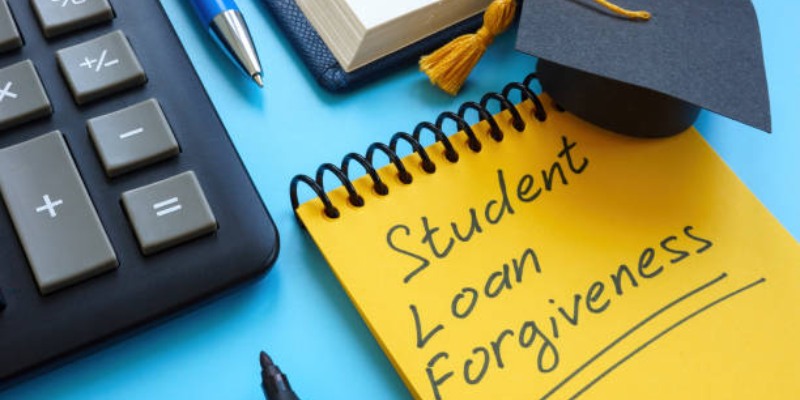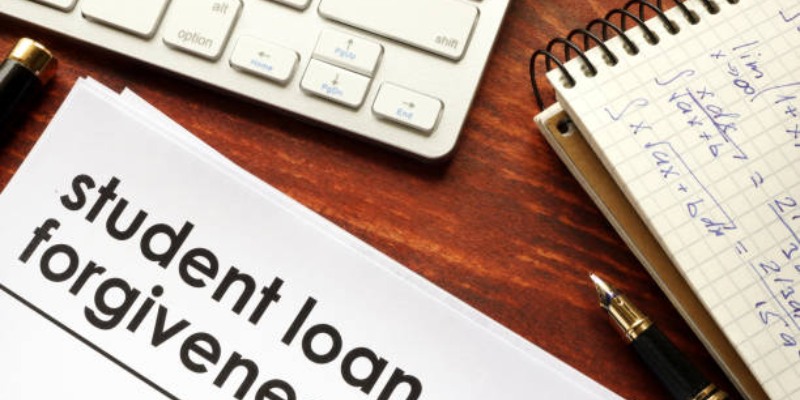Career & Education
The Easiest Way To Land Your First Job After Graduation
1757645874000
There's a silent struggle that many people don't discuss enough — carrying student loan debt while trying to lead an everyday life. Some took out loans hoping to improve their future, only to find out that the loan itself became a heavy burden. However, many people are unaware that there are programs available to help alleviate part or all of this debt.
There's a silent struggle that many people don't discuss enough — carrying student loan debt while trying to lead an everyday life. Some took out loans hoping to improve their future, only to find out that the loan itself became a heavy burden. However, many people are unaware that there are programs available to help alleviate part or all of this debt.
Too many graduates fail to check if they qualify. That's how people end up stressed, broke, and bitter — not because help isn't available, but because they don't know where or how to look. The good news is that student loan forgiveness programs are available for individuals in various careers and situations. And it's time to learn about them. One might change your life.

This is one of the most popular forgiveness programs out there, but it’s also one of the most misunderstood. People think it’s automatic. It is not.
The PSLF is for individuals who work in government or nonprofit organisations. That means teachers, nurses, police officers, social workers, and many more. To qualify, you must:
Work full-time for a qualifying employer
Make 120 qualifying monthly payments under a qualifying repayment plan
Have Direct Loans (or consolidate other federal loans into a Direct Loan)
However, here's what people often get wrong — they fail to certify their employment or select the incorrect repayment plan. Ten years later, they're shocked to learn none of their payments counted.
Be smart. Submit your employment certification form annually and verify that your plan is eligible.
Teachers carry more than chalk and lesson plans. Many have debt, Stress, and the weight of broken systems. If you're a teacher working in a low-income school or educational service agency, you could get up to $17,500 in forgiveness on your Direct or Stafford Loans.
But not just any teacher qualifies.
You must:
Teach full-time for five complete and consecutive academic years
Work in a qualifying school
Teach a high-need subject, such as math, science, or special education, for the maximum amount of time.
Teachers who don’t teach those subjects may still get up to $5,000. That’s not a small amount when rent is due, groceries are calling, and your car is two engine sounds away from breaking down.
Not everyone has a government job. Not everyone is a teacher. But that doesn’t mean there’s no help.
For people struggling with monthly payments, income-driven repayment (IDR) plans can lower your bill based on your income and family size. If you stay on the plan for 20 or 25 years, depending on the plan, the remaining balance is forgiven.
Twenty years may sound long, but think again. People carry loans for decades without a break. With an IDR plan, at least the finish line is clear — and real.
And here's where it gets better: there's something called the IDR account adjustment happening. It's a one-time opportunity for borrowers to receive credit for past payments, even those that didn't previously qualify. Some people may find forgiveness more quickly than they thought. But if they miss the window, they'll lose the opportunity.

Imagine borrowing money to attend school, only to discover that the school has lied or misled students. That's betrayal. That's damage. And the government knows that.
Borrower Defence to Repayment allows students to request loan forgiveness if their school has committed an error — such as false advertising, misleading job placement rates, or illegal recruiting practices.
Many for-profit schools have been exposed to these shady moves, and students are winning their cases. However, many others remain silent. They don't know they can fight back. They don't even try.
Don’t sit in silence if you were wronged. Apply. The worst they can say is no. The best? Your loan disappears.
Sometimes, the school closes while the student is still enrolled or shortly after they withdraw from the program. That can feel like a trap with no way out. But there is one.
If your school shut down while you were attending or soon after you left, you may qualify for a complete discharge of your federal student loan. But this is not something they'll always call you to offer. You must take the step and apply.
Some people stay paying loans for a school that no longer exists. That's what happens when you don't pay attention.
Although Perkins Loans are no longer offered, some individuals still hold them. And some jobs can help wipe them away.
Individuals working in fields such as teaching, nursing, law enforcement, or early childhood education may be eligible for a gradual cancellation of their Perkins Loans. The longer you work in the qualifying field, the more your loan gets cancelled — sometimes up to 100%.
But again, it won't happen just because you're employed. You must apply through your loan holder and provide proof of your annual income. No shortcuts.
Health can change everything. Some people planned to work hard and repay every dollar — until a disability changed their entire lives.
If a borrower becomes totally and permanently disabled, they may be able to have their federal student loans discharged.
Proof is required from the Social Security Administration, a physician, or the U.S. Department of Veterans Affairs. It’s not a pity offer — it’s recognition of a changed life and the need for relief.
The system may be slow, but it works when used right.

Not all student loan forgiveness comes from the federal government. Some states have programs to attract or retain professionals.
There are states offering forgiveness to doctors who serve in rural communities, lawyers who work in public service roles, or nurses who agree to work in areas with critical shortages.
Each program has its own rules, deadlines, and requirements. But they exist. And they’re helping people start over every day.
If someone says there's no help, they haven't looked in the right places.
When something sounds too good to be true, it probably is. There are scammers out there promising complete forgiveness in exchange for upfront fees or sensitive information.
Loan forgiveness is free. The application is free. Guidance is available through the official loan servicers. Don't pay someone who says they can "guarantee" forgiveness. No one can guarantee it, but the Department of Education can.
Too many people lose money trying to escape debt. Please don't become one of them.
Student loan forgiveness is not a myth. But it is a system built on paperwork, deadlines, and fine print. Many who qualify never apply. Some start to give up halfway. Others never even know the programs exist.
But knowledge is not just power — it’s a way out.
If any of these programs fit your situation, take the next step. Ask questions. Check your loan type. Submit the forms.
Debt may have followed you for years, but it doesn’t have to follow you forever.
Do you like this article?
Career & Education
1757645874000
Career & Education
1757645873000
Fashion
1757645952000
Fashion
1757645952000
Fashion
1757645952000
Mother & baby
1757645852000
General Finance
1757645995000
Mother & baby
1757645852000
Career & Education
1757645873000
Fashion
1757645952000









